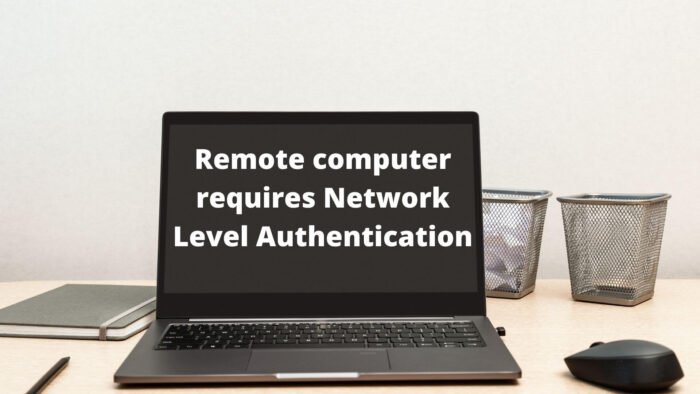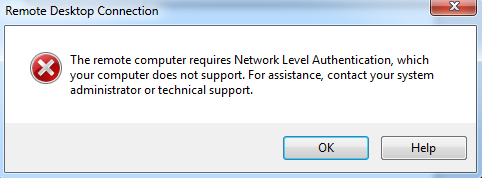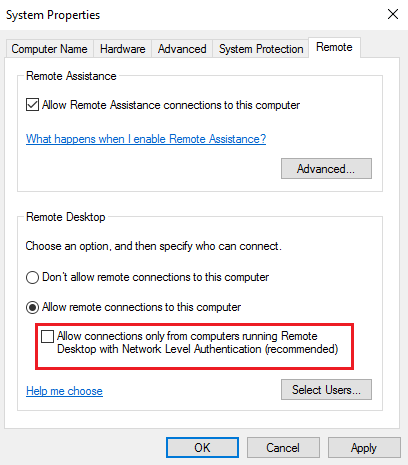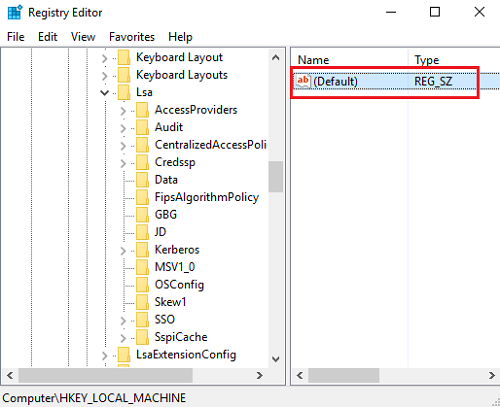If you are unable to connect your Windows computer remotely and you receive a message The remote computer requires Network Level Authentication, then this post may be able to help you. Users have reported receiving this error on domain-connected systems even when Network Level Authentication or NLA is enabled.

The remote computer requires Network Level Authentication

The variants of the message that you could see are:
The remote computer requires Network Level Authentication, which your computer does not support. For assistance, contact your system administrator or technical support.
Or-
The remote computer that you are trying to connect to requires Network Level Authentication but your Windows domain controller cannot be contacted to perform NLA. If you are an administrator on the remote computer, you can disable NLA by using the options on the Remote tab of the System Properties dialog box.
This article will help you with a step-by-step guide to this solution. However, you might want a more permanent solution because you cannot run the device forever without an actively enabled NLA. So you need a better solution. This article will offer you that as well.
1] Change Remote Desktop setting
Going via the Remote Desktop Settings route is the simpler solution. It will work for you and you might not feel the need to enable NLA back on. So, if you are ready for this solution, here is how you go about it. Follow the steps carefully.
1] Go to ‘Run’ and type ‘sysdm.cpl’ and hit the ‘Enter’ button.
2] You are now in the System Properties window. You need to go to the Remote tab.
3] Find the “Allow connections only from computers running Remote Desktop with Network Level Authentication (recommended)” and uncheck this option.
4] Click ‘Apply’ and then click ‘OK’ or hit the ‘Enter’ button to disable Network Level Authentication.
5] Reboot your device and check if you can connect devices remotely.
This fix should work because you just undid the only thing that was causing the problem. But just in case it did not work, or you do not want to pursue this route, there is another option that is also simple to follow.
2] Edit Registry
Please backup your data before making changes to the registry of the system.
Follow the steps very carefully, and you will be good to go. You have already created your System Restore point, so there’s nothing to worry about anymore. So here we go.
1] Go to ‘Run’ and type ‘regedit’ and click ‘OK’ or hit ‘Enter’. This opens the Registry Editor.
2] Look at the left panel in the Registry Editor window and find the registry key called:
HKEY_LOCAL_MACHINE\SYSTEM\CurrentControlSet\Control\Lsa
3] Select Lsa and then locate Security Packages in the right panel. Double-click on it.

4] Find the Edit Multi-String option and type ‘tspkg’ in the Value data box. This will be the only value.
5] Thereafter, locate the following registry key in the navigation pane:
HKEY_LOCAL_MACHINE\SYSTEM\CurrentControlSet\Control\SecurityProviders
6] Double-click SecurityProviders in the right-pane to open its properties.
7] Type credssp.dll in the Value data box and let it be the only value.
8] Click ‘OK’ and close the Registry Editor.
Though the second method is more elaborate and needs more attention, it is the recommended solution.
I hope this helps.
How do I connect to Remote Desktop with Network Level Authentication?
If there is no way to connect to a remote desktop with the NLA or if you receive an error asking you that the NLA is missing, you need to enable an option. It is available with the Group Policy.
Open Group Policy Editor and navigate to Computer Configuration > Administrative Templates > Windows Components > Remote Desktop Services > Remote Desktop Session Host > Security. Locate and enable the Require user authentication for remote connections by using the Network Level Authentication policy.
Are third-party services better than Remote Desktops?
Remote Desktops are limited to when you connect to a computer on the same network or through the IP address. Compared to this, services such as AnyDesk or Team Viewer use their network to connect computers. On top of this, third-party services offer a lot more compared to Remote Desktop, which is primarily used on Enterprise and Home networks.
Leave a Reply